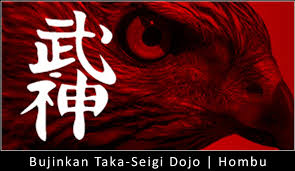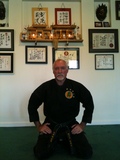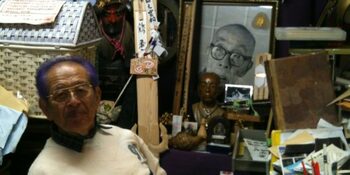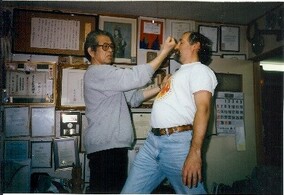
Shinken Tactical Shotgun Reload
10.12.18
The Taijutsu of Shotgun
Recently, as part of a one of my Saturday seminars, I taught some of what I would call the Taijutsu of Shotgun.
Soke once said you have to understand that all weapons have their own Taijutsu and adapt your movement to the weapon, not the weapon to you.
I prefer using a pump shotgun for defense. We use pump shotguns in the military for several reasons. Shotguns are a highly versatile weapon that can be used for clearing a room, blasting through barriers and where taking precise aim is not assured. Add a flashlight and it becomes a shock and awe weapon in a dark and confined space.
Depending on the load, choke and distance; a shotgun has the capacity for a widely dispersed pattern of small pellets (shot) with light penetration, to a devastatingly tight pattern that can punch through concrete (using slugs).
Often, Special Operators will load their shotguns with staggered loads: 2 heavy shot shells (such as nbr 2 or 4), one slug, shot (double 00), 2 heavy shot shells, etc. When you know your loads, you can select the rounds you want to shoot by ejecting shells until you get to the ones you need to shoot.
I prefer a pump shotgun as opposed to an automatic feed shotgun. There are less high end parts on a pump gun.
Jams are much easier to detect and correct. Ejecting shells until you get to the round you want to shoot is easier. And you have more loading options with a pump shotgun. A pump shotgun is normally loaded from underneath by shoving the shell into the lower feeding tube underneath the barrel. Depending on the length of the tube, you can load a number of shells to capacity, then “pump” one round into the breach chamber and then load one more shell into the tube. This gives you one round in the ready fire position, plus a full feeding tube (or full magazine if you prefer the carbine/pistol vernacular). This way of loading is fine when you are just loading to shoot at a target at the range, but what if you are under duress or tactically engaged with an armed enemy? You can stand there and turn the gun over and show your opponent you have an empty weapon. A quick and tactically safe way to load one round in the open chamber is to do the following:
– Keep your weapon aimed at your opponent. They won't necessarily know
you are out of ammo.
– With a shell positioned in your left hand the same direction as it
goes into the feeding tube, bring you hand up underneath the breach
and roll the shell into the open breach from the right side. Using
your hand and fingers you can feel that the shell goes in straight. It
will settle there in the breach as long as the gun is held steady and
horizontal (pointed at your target).
– As soon as you drop the shell into the breach, use your left hand to
pull the pump forward (loading the shell).
Since you are pointing at your enemy while doing this you can fire
that one round at will or with the confidence that you have one round
ready to go, you can then start feeding rounds into the tube from the
bottom, one at a time.
This is one of the things we worked on at the seminar. Loading one round from underneath with the left hand, keeping aim on your target
and firing as soon as you pulled the pump forward. Students were able to perform this movement fairly well with limited practices. You’ll
see in the video that from load to pump to fire is a very short amount of time and all the while maintaining an aimpoint on the opponent.
Understanding the Taijutsu of the Shotgun will give you the tactical advantage over your opponent in a combative situation. I think this is what Soke means when he says this.
Write to me with your questions and I’ll try to address them on the blog. Please do NOT try this on your own or at your local gun range
without getting permission first. Watch the website for when we will do this type of training again and come join us!
Gambatte !!




